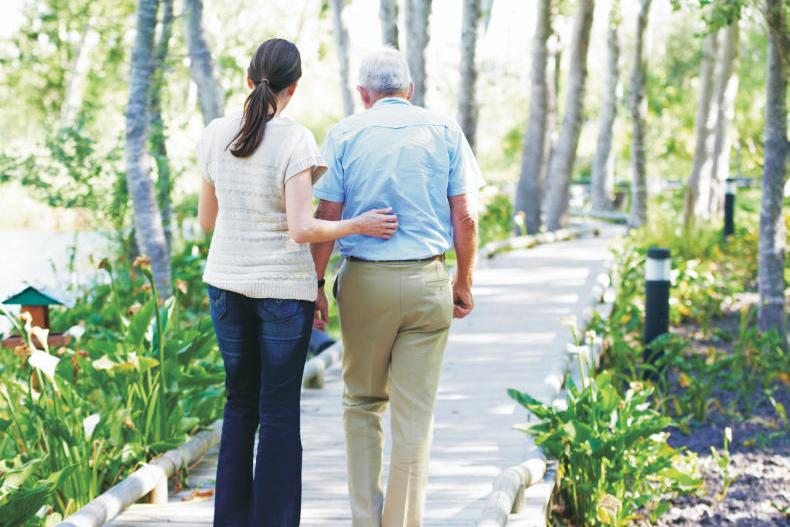We all know that regular exercise is important for both our physical and mental wellbeing.
At this time of social distancing, stress and anxiety are very common and natural feelings to experience.
According to the Institute of Public Health guidelines, adults should aim to do at least 30 minutes of moderate-intensity physical activity five times a week.
Children and young people aged five to 18 years should aim for an average of at least 60 minutes per day across the week.
Social distancing guidelines means, for example, that we can’t do our usual 10km run to the park and back. However, you can run 2km five times and stay within the Government’s social distancing guidelines to help prevent the spread of COVID-19.
Keep active
Some activity is better than none at all and even very short exercises and movements can help maintain a person’s physical and mental health.
“The evidence shows that being more active keeps us healthy, improves our mood and wellbeing, and reduces stress and anxiety,” said Dr Conor Cunningham from the Institute of Public Health.
"There are a lot of things we can do at home to build exercise and movement into our day without leaving the house or needing expensive equipment."
It is important to maintain a routine throughout the day according to Dr Cunningham.
“Building physical activity into your day can help to anchor a routine. But the most important message is for people to try to move more and make it a daily habit. Any amount of activity is better than none,” he said.
Activities to get you moving at home
The Institute of Public Health have published 10 activities that can be completed at home, so that you can stay physically fit while following the guidelines on lockdown.
Try to move more. Any amount of activity is better than none.Break up long periods of sitting with light activity. Try walking around the house, get up each time an advert comes on the TV or walk up and down the stairs.Move to your favourite music.Try to stand or move around the home during calls or reading a book.Briskly walking or moving around the home or garden for 10 minutes two or three times a day, vacuuming and brushing floors will get you moving.Try to do seated exercises such as air punches or marching legs.Use a tin of beans or a jar of carrots as weights for upper body exercises.- Build in strength exercises by doing push-ups against a wall, the kitchen counter or on the floor.
- Perform yoga or simple stretching to help maintain your flexibility. Deep breathing and mindfulness can also reduce anxiety.
- Join a virtual workout class or live movement session online. For older adults, organisations such as Age & Opportunity and Siel Bleu are hosting virtual sessions on their Facebook pages.
Read more
Louth food company donates meals to hospital workers
No need to panic: choose delivery
We all know that regular exercise is important for both our physical and mental wellbeing.
At this time of social distancing, stress and anxiety are very common and natural feelings to experience.
According to the Institute of Public Health guidelines, adults should aim to do at least 30 minutes of moderate-intensity physical activity five times a week.
Children and young people aged five to 18 years should aim for an average of at least 60 minutes per day across the week.
Social distancing guidelines means, for example, that we can’t do our usual 10km run to the park and back. However, you can run 2km five times and stay within the Government’s social distancing guidelines to help prevent the spread of COVID-19.
Keep active
Some activity is better than none at all and even very short exercises and movements can help maintain a person’s physical and mental health.
“The evidence shows that being more active keeps us healthy, improves our mood and wellbeing, and reduces stress and anxiety,” said Dr Conor Cunningham from the Institute of Public Health.
"There are a lot of things we can do at home to build exercise and movement into our day without leaving the house or needing expensive equipment."
It is important to maintain a routine throughout the day according to Dr Cunningham.
“Building physical activity into your day can help to anchor a routine. But the most important message is for people to try to move more and make it a daily habit. Any amount of activity is better than none,” he said.
Activities to get you moving at home
The Institute of Public Health have published 10 activities that can be completed at home, so that you can stay physically fit while following the guidelines on lockdown.
Try to move more. Any amount of activity is better than none.Break up long periods of sitting with light activity. Try walking around the house, get up each time an advert comes on the TV or walk up and down the stairs.Move to your favourite music.Try to stand or move around the home during calls or reading a book.Briskly walking or moving around the home or garden for 10 minutes two or three times a day, vacuuming and brushing floors will get you moving.Try to do seated exercises such as air punches or marching legs.Use a tin of beans or a jar of carrots as weights for upper body exercises.- Build in strength exercises by doing push-ups against a wall, the kitchen counter or on the floor.
- Perform yoga or simple stretching to help maintain your flexibility. Deep breathing and mindfulness can also reduce anxiety.
- Join a virtual workout class or live movement session online. For older adults, organisations such as Age & Opportunity and Siel Bleu are hosting virtual sessions on their Facebook pages.
Read more
Louth food company donates meals to hospital workers
No need to panic: choose delivery









SHARING OPTIONS